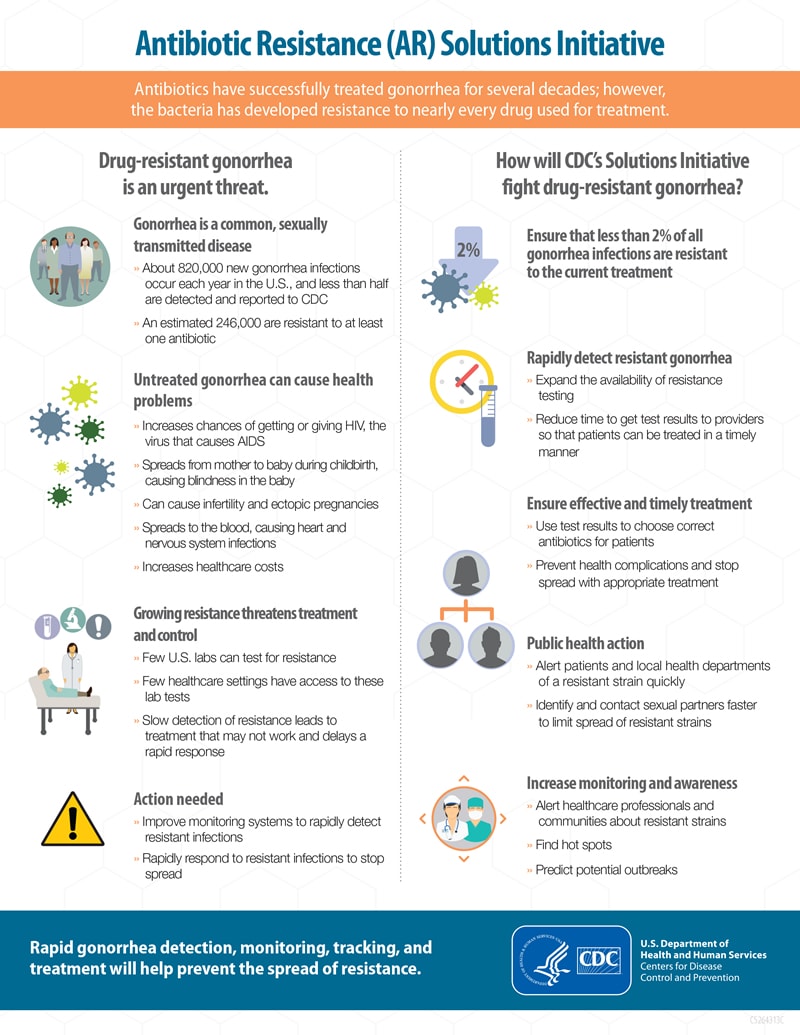Drug-Resistant Gonorrhea

Infographic Details
Antibiotic Resistance (AR) Solutions Initiative
Antibiotics have successfully treated gonorrhea for several decades; however, the bacteria has developed resistance to nearly every drug used for treatment.
Drug-resistant gonorrhea is an urgent threat.
Gonorrhea is a common, sexually transmitted disease
- About 820,000 new gonorrhea infections occur each year in the U.S., and less than half are detected and reported to CDC
- An estimated 246,000 are resistant to at least one antibiotic
Untreated gonorrhea can cause health problems
- Increases chances of getting or giving HIV, the virus that causes AIDS
- Spreads from mother to baby during childbirth, causing blindness in the baby
- Can cause infertility and ectopic pregnancies
- Spreads to the blood, causing heart and nervous system infections
- Increases healthcare costs
Growing resistance threatens treatment and control
- Few U.S. labs can test for resistance
- Few healthcare settings have access to these lab tests
- Slow detection of resistance leads to treatment that may not work and delays a rapid response
Action needed
- Improve monitoring systems to rapidly detect resistant infections
- Rapidly respond to resistant infections to stop spread
How will CDC’s Solutions Initiative fight drug-resistant gonorrhea?
Ensure that less than 2% of all gonorrhea infections are resistant to the current treatment 2%
Rapidly detect resistant gonorrhea
- Expand the availability of resistance testing
- Reduce time to get test results to providers so that patients can be treated in a timely manner
Ensure effective and timely treatment
- Use test results to choose correct antibiotics for patients
- Prevent health complications and stop spread with appropriate treatment
Public health action
- Alert patients and local health departments of a resistant strain quickly
- Identify and contact sexual partners faster to limit spread of resistant strains
Increase monitoring and awareness
- Alert healthcare professionals and communities about resistant strains
- Find hot spots
- Predict potential outbreaks






















.png)











No hay comentarios:
Publicar un comentario